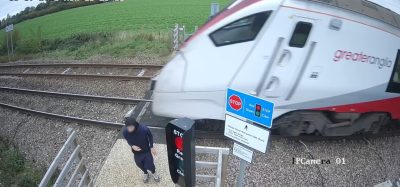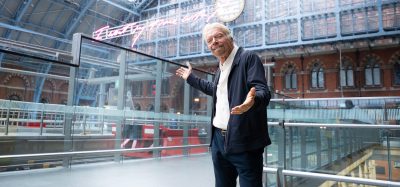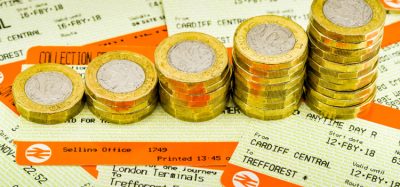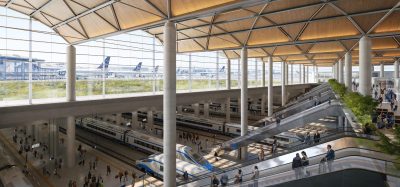Access For All: Interview with GTR’s Sophie Court
Posted: 10 May 2023 | Global Railway Review | No comments yet
For Global Railway Review’s ‘Access For All’ interview series, Sophie Court, Accessibility Improvement Manager at Govia Thameslink Railway (GTR), explains how a collaborative and educated approach is breaking down the barriers to travel.
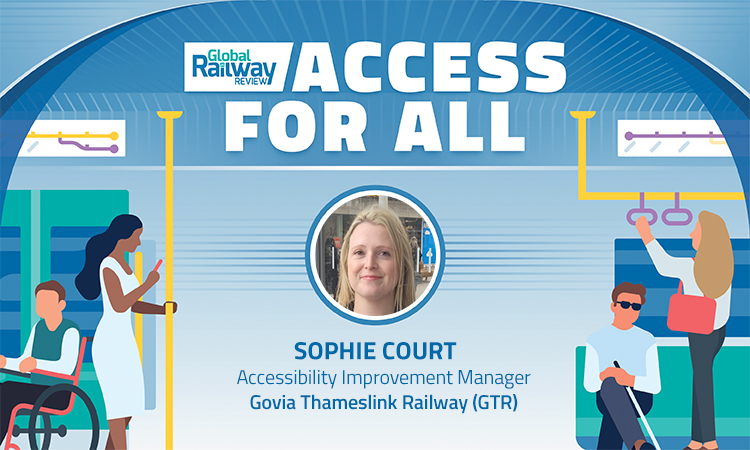

What is GTR’s mission statement when it comes to accessibility?
We are committed to creating a more accessible and inclusive railway, where everyone has the confidence to travel, no matter what their disability or need for assistance. We know we can do better, and we are constantly looking at ways to improve the support we give our customers.
Do you think the rail industry as a whole is doing enough to ensure rail travel is accessible for all?
There are a lot of dedicated people in the industry committed to making tangible improvements to how accessible rail travel is, as well as raising awareness of the different types of disabilities. We work closely with accessibility leads at other rail companies, Network Rail, and the Rail Delivery Group (RDG) to share best practice and work towards creating a consistent joined up approach that makes it easy for all disabled customers no matter where they are travelling on the rail network.
I have also noticed a broader awareness of accessibility throughout the industry, such as making sure customer information really is user friendly and helpful for all stages of a customer’s journey as well as providing it in additional alternative formats. Equality impact assessments are also carried out for any changes made to avoid any unintended consequences that could impact on disabled people.
Gaining the input of disabled people with lived experience is a vital piece of this puzzle to really understand how we can do things better and continue to make sure rail travel is accessible to everyone. We consult regularly with our Access Advisory Panel, which features real customers who travel on our network and represent a broad range of disabilities and have built good relationships with disability organisations that helps shape our approach to accessibility.
What on-board amenities/facilities do GTR’s trains offer to ensure people with disabilities have a comfortable journey?
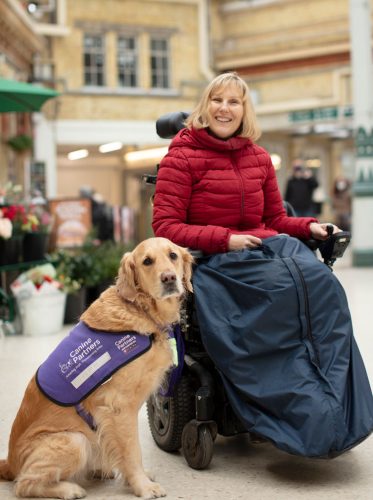

GTR supports the assistance dog card scheme.
Credit: Thameslink
Govia Thameslink Railway (GTR) runs the Thameslink, Great Northern, Southern and Gatwick Express services. All our trains have accessible features, such as dedicated spaces for wheelchair users with signs making clear that they have priority in these areas. We also have priority seating for customers who need some extra space and cannot stand whilst travelling. We support the assistance dog card scheme to make sure assistance dogs have a safe space on-board to carry out their important work. Most of our trains also have accessible toilets and our frontline teams can use an app to check if any are out of order before assisting someone on-board. However, we have robust maintenance processes to keep our toilets in service and clean as much as possible.
We also provide information visually and audibly through our on-board customer information systems. Recent improvements have been made to the information on our websites that shows train formations and quieter trains for customers who prefer to travel at less busy times.
The five Thameslink stations in the heart of London between London St Pancras and London Bridge via Farringdon, also provide level boarding onto accessible carriages from platform to train making independent travel easier, although staff are always on hand at these stations to arrange assistance when they want to get off at the other end of their journey.
How does GTR support individuals with disabilities to enhance their station navigation experience?
We have really been focusing on how we can make information on assistance stand out more at our stations, which includes clearer signs so all our customers can navigate our stations easily and find important facilities. We are installing new signs with improved contrast at stations served by our mobile assistance teams to raise awareness of how we can support customers and how they can contact us to request assistance for their journey.
We have also been working with disability organisations such as the Thomas Pocklington Trust and Bedfordshire Sight Loss Council to review the tactile wayfinding system at Stevenage station. This has led to improvements at that station as well as giving us a better understanding of these systems overall and their importance for blind and visually impaired customers using our stations. We will also shortly be starting a trial with a new visual interpretation app at four of our stations, which will improve the navigation experience and enhance independent travel.
Is website accessibility important?
Our websites are one of our main sources for customer information and we want all our customers to be able to access them easily. We are compliant with W3C Web Content Accessibility Guidelines to AA standard and have carried out a variety of tests to check how user friendly our websites are, including how they work for people using screen readers. We are also providing more information in alternative formats including easy read, audio and large print to cater for a range of needs.
But we understand this can be taken for granted and we are continually looking for ways to make our website more accessible for all and user friendly so that everyone can find the information they need with as few clicks as possible. We have recently started a new review of website navigation and format. Accessibility is a major consideration for this and we are including input from people with lived experience of a range of disabilities to make sure this review leads to improvements for everybody. We are also introducing videos about what to expect when travelling on the Assisted Travel sections of our websites as another way of showing customers the different ways we support accessible travel.
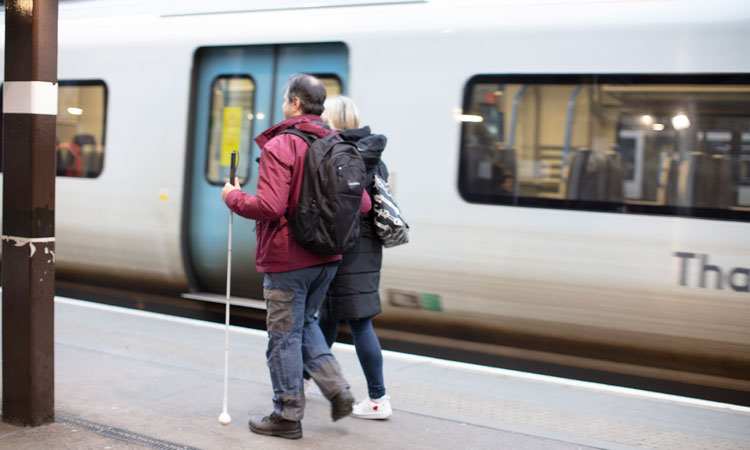

GTR has recently launched a new trial of the visual interpretation app, Aira, to help blind and visually impaired customers at four of our stations
Credit: Thameslink
How does GTR ensure its staff are trained to provide assistance to people with disabilities?
All of our frontline staff receive disability awareness training which includes practical skills, inclusive language and modules delivered by specialist trainers with lived experience of disability. This helps bring the content to life and makes sure we capture the spirit of the training to treat everyone as an individual and emphasise why it is important to make our services accessible to all. Communication and customer service are highlighted throughout our training because we consider these elements are just as important as knowing how to deploy a ramp or check a ticket.
We will soon roll out our refresher disability awareness modules to continue the emphasis on accessibility. These will build on the learnings from the original modules and raise awareness of different disabilities including non-visible disabilities.
Our frontline teams are also given a range of resources to help enhance their knowledge and we have charity partners who support us with raising awareness of different disabilities and the ways we can support all our customers.
We also provide wider disability awareness training within GTR so that all departments understand why making our services accessible and inclusive is vital, and the role they play in making this happen no matter what their job is.
How can people with disabilities provide feedback to GTR and how is this information taken forward to improve accessibility?
We provide a range of channels for customers to provide feedback to our Customer Relations team including social media. We also gather customer feedback through Assisted Travel customer satisfaction surveys and a new programme of accessibility mystery shopping, as well as by working with disabled people and their representative organisations. We analyse this insight and use it to take targeted actions and shape our accessibility improvement plan.
How does GTR collaborate with disability advocacy groups to improve accessibility for people with disabilities?
We work with a range of different disability groups and local stakeholders across our network to better understand how we can support our disabled customers and make train travel a more appealing option. We also have our own Access Advisory Panel who we consult with on a regular basis to gain insight and feedback from real customers.
One of our biggest areas of focus is raising awareness and promoting all the different ways we support accessibility and help everyone travel independently with confidence. This covers help being available prior to, during and after travel depending on each customer’s individual preferences.
One of our most popular programmes is our series of Try a Train events, which aims to increase familiarity and confidence of travelling by rail and can be tailored to the attendees’ needs. It is easy for customers and organisations to apply to take part via our dedicated Try a Train page on our website.
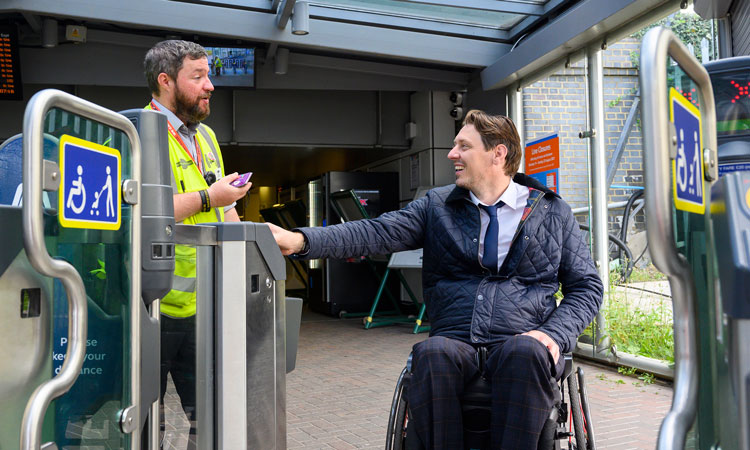

GTR has recently launched a new trial of the visual interpretation app, Aira, to help blind and visually impaired customers at four of our stations
Credit: Thameslink
To what extent do you think that more needs to be done at a government level to ensure trains and stations become even more accessible?
I think a thorough review of what we currently have in place is needed to understand what the remaining barriers are to making rail travel accessible to all. We need to listen to what disabled customers are telling us and work with them to create a holistic industry plan to make travelling by train truly inclusive. This includes looking at: infrastructure (from accessible station design to investment in crucial assets such as reliable station lifts), clear customer information and train design (within the carriage and consistent design across the country to then make independent boarding more of a reality) as well as having the right people and creating the right culture where everyone is treated as an individual.
Having a consistent approach across the rail industry will make travelling by train a better experience for everybody.
Is GTR currently trialling/developing any new accessibility initiatives?
We have been looking into innovative assistive technologies to enhance our accessibility offering and have recently launched a new trial of the visual interpretation app, Aira, to help blind and visually impaired customers at four of our stations; Brighton, Stevenage, Blackfriars and East Croydon. This provides an on-demand personalised navigation and wayfinding service from trained advisers via the customer’s smartphone camera. We selected Aira after reviewing a range of different navigational apps and seeking feedback from customers with lived experience. Anyone can sign up for this app and our trial means that customers can use it free of charge at any of our trial stations, whether that’s to locate a platform, a member of staff or a specific facility at the station whilst on their journey. We hope that this app can improve the support we can offer blind and partially sighted customers to put them in control of their journeys and be able to make informed decisions, which increase confidence to travel independently by rail.
Another partnership we are excited about this year is our sponsorship of the first step-free art trail in London with the charity Whizz Kidz. This will be the first art trail of its kind in London and will be a big feature of this summer with a range of activities and events planned to celebrate accessibility and raise awareness for this brilliant charity who support young wheelchair users.
How does GTR plan to ensure that all customers feel confident while travelling with them in the future?
We are constantly looking to enhance the support we can offer our disabled customers and make our services as welcoming to everyone as possible. We will continue to focus on getting the basics right to make sure we offer a consistent and reliable service that breaks down barriers to rail travel and enables everyone to travel independently with confidence. We also have an internal equality impact assessment process that is applied to any planned changes, to make sure we are constantly representing accessibility and the voice of the customer in anything we do. We will continue to work with disabled people and disability organisations and investigate new innovative ways of improving the journey experience for all.
Have you seen the other exclusive interviews from Global Railway Review with rail accessibility experts?
- Catherine Langlois, Senior Advisor – Universal Accessibility, VIA Rail – READ NOW!
- Chris Jeffery, Accessibility & Transport Integration Manager, TransPennine Express – READ NOW!
- Ronan Murphy, Head of Customer Care and Accessibility, Irish Rail – READ NOW!
- Franz Andel, Accessibility Manager at ÖBB-Personenverkehr – READ NOW!
There will be other interviews over the coming weeks; participants will include DSB, ProRail, Avanti West Coast, Hull Trains, and many more!
If you would like to take part in the Access For All series, or would like to nominate a colleague, please email: Craig Waters, Editor, Global Railway Review.
Related topics
Passenger Experience/Satisfaction, Passengers With Reduced Mobility (PRM), The Workforce



